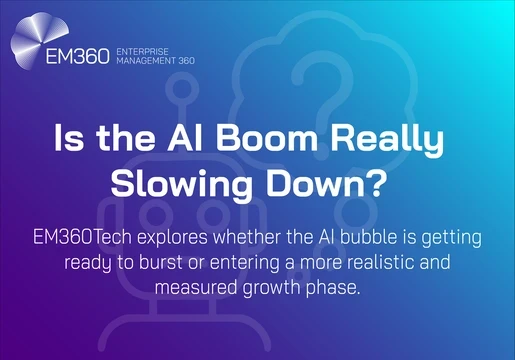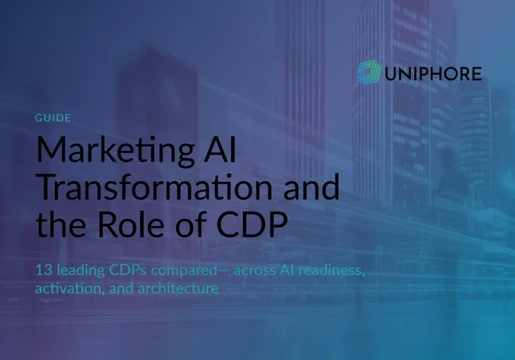It may seem unnecessary to provide an introduction to generative AI at this point, but just in case, let’s start there to level set; then dig into the limitations and challenges. Generative AI refers to a class of artificial intelligence that specializes in creating content, whether that be text, images, or even music. This technology operates by learning from massive datasets to generate new, original material that resembles the learned content. The most familiar examples include text-based models like ChatGPT, image generators such as DALL-E, and AI that composes music. While the potential of generative AI is significant, offering innovative solutions across various sectors including marketing, design, and entertainment, it is not without limitations and challenges.

Limitations
The following list represents some of the current limitations of generative AI. The evolution of generative AI is very fast, as evidenced by the past 12 months of model version releases driving the exploding use by individuals and businesses. It’s always important to put limitations in the context of the time of the discussion, since the rate of change is so accelerated, even compared to the usual exponential change rate of technology.
-
Data Dependency: The quality and scope of a generative AI's outputs are directly tied to its training data. This dependence means that if the training data is limited, biased, or flawed in any way, the AI's outputs will reflect these shortcomings. This limitation is particularly concerning in scenarios where unbiased, broad, and accurate data is not readily available, leading to potentially skewed or inaccurate results.
-
Black Box Nature: Generative AI systems often function as a "black box," meaning the exact way they reach a particular conclusion or generate a specific output is not transparent. This opaqueness can be problematic in critical applications where understanding the decision-making process is essential. For instance, in healthcare or finance, where decisions have significant consequences, the inability to trace the AI's thought process can be a major drawback.
-
Easily Fooled: Despite their advanced capabilities, generative AI systems can be easy to fool. Subtle changes in input data that would be imperceptible or irrelevant to humans can lead to completely different outcomes from the AI. This vulnerability can be exploited in malicious ways, such as feeding misleading data to skew outputs or using adversarial attacks to deceive the AI into making incorrect decisions or generating false content.
-
Lack of Creativity and Contextual Understanding: While generative AI can mimic creativity, it essentially remixes and repurposes existing data and patterns. It lacks genuine creativity and the ability to produce truly novel ideas or concepts. These systems often struggle with understanding context, especially in complex or nuanced situations. This limitation is evident in scenarios requiring deep understanding of cultural nuances, emotional intelligence, or ethical considerations.
-
Inability to Generalize Beyond Training Data: Generative AI systems are typically very good at handling tasks similar to those they were trained on but struggle to generalize to new, previously unseen tasks. This limitation means that they may not perform well in situations that deviate significantly from their training scenarios, requiring constant updates and retraining with new data sets to maintain relevance and accuracy.
-
Resource Intensive: The development and operation of generative AI models generally requires significant computational resources. Training large models demands substantial processing power and energy, making it expensive and less accessible for smaller organizations or individuals. This resource intensity also raises environmental concerns, given the carbon footprint associated with the massive data centers needed to train and run these models.
Challenges
Using generative AI in business comes with a set of unique challenges that require careful consideration and strategic planning. Here are some key challenges:
-
Data Privacy and Security: Generative AI models require vast amounts of data for training. Ensuring the privacy and security of this data, especially when it includes sensitive customer information, is essential. Businesses must adhere to data protection regulations like GDPR and implement robust cybersecurity measures to prevent data breaches.
-
Quality and Reliability: While generative AI can produce high volumes of content or solutions, ensuring consistent quality and reliability is a challenge. The output can sometimes be unpredictable or inappropriate, necessitating rigorous human quality checks and oversight.
-
Bias and Ethical Concerns: AI models can inadvertently learn and perpetuate biases present in their training data. This can lead to biased decision-making, reinforcing stereotypes, or unfair practices. Businesses must actively work to identify and mitigate these biases to ensure ethical AI use.
-
Integration with Existing Systems: Integrating generative AI into existing business systems and workflows can be complex. It often requires significant modifications to current processes and the development of new interfaces or protocols.
-
Costs and Resource Allocation: The development and maintenance of generative AI systems can be resource-intensive. This includes costs related to acquiring high-quality training data, computing power, and specialized talent to build and manage these systems. (also, as previously noted above, the environmental impact can be substantial)
-
Regulatory Compliance: The legal landscape for AI is continually evolving, with different countries having varying regulations. Staying compliant with these regulations, especially for businesses operating internationally, can be a significant challenge.
-
Scalability and Performance: As businesses scale, their AI solutions need to scale with them. Ensuring that AI systems can handle increased loads without compromising performance or accuracy is crucial.
-
User Trust and Acceptance: Gaining trust from users and stakeholders in AI-generated results is another hurdle. It requires transparency in how the AI works, its limitations, and ensuring its outputs are reliable and understandable.
-
Intellectual Property Rights: Determining the ownership of AI-generated content and respecting the intellectual property rights involved in training data can be complex. This includes navigating the legal aspects of using third-party data and the outputs generated by AI.
-
Keeping Up with Technological Advances: The field of AI is rapidly evolving. Staying up to date on the latest developments, understanding their implications, and incorporating them into business strategies require continuous learning and adaptation.
-
Human-AI Collaboration: Finding the optimal balance between human and AI contributions in workflows is challenging. It involves understanding the strengths and limitations of AI and designing processes that effectively leverage both.
Each of these challenges demands a strategic approach, combining technological expertise with thoughtful consideration of legal, ethical, and business implications. Addressing these challenges effectively and overcoming its limitations can unlock the transformative potential of generative AI in business.







Comments ( 0 )